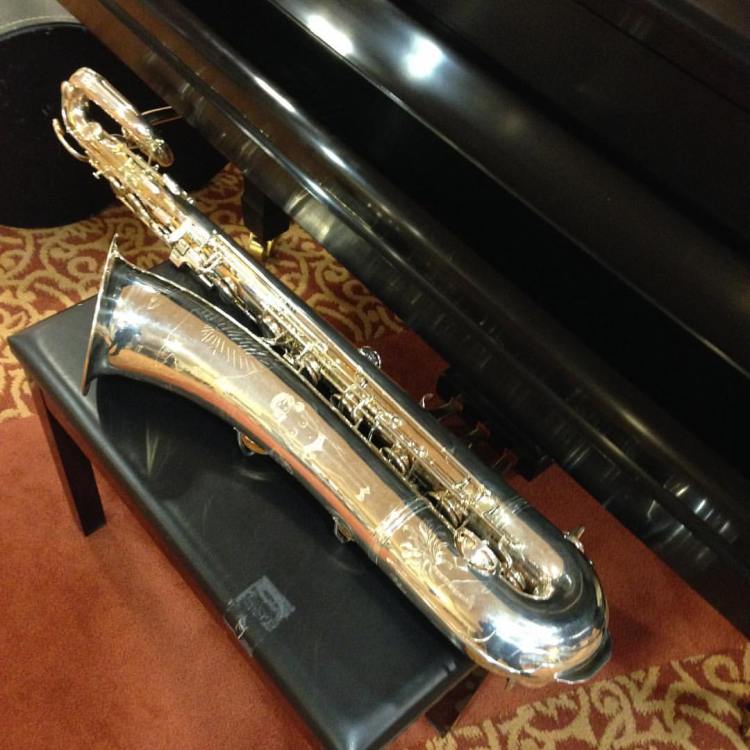My first experiences as a full-time baritone saxophonist were in horn sections. I was really excited to take this challenge on and I did not know that this would shape the next five years (and beyond) of my career.
For me, the concept of playing the bari part was a huge shift. It made me examine how I played rhythmically, how my sounds fit with a section, and how I articulated (and the variations). Also, it made me rethink how I wrote for horn sections and what gear I used.
Using The Baritone To Its Fullest Potential
As someone who writes for horn sections, I learned a lot about writing for horn sections from actually sitting on the baritone saxophone book, and how myself (and many other writers) simply didn’t (or don’t) value having a baritone sax in their band. It’s not that they don’t like having a baritone sax close by, but that book may not be utilized to its fullest potential.
As a bari player, I love playing in the holes against the other horns, hooking up with the bass, and horn riffs, but too often the bari is treated like “just another horn”, where they’re playing unison horn lines instead of providing the foil to the rest of the horn section or band. Another situation that I’ve seen is that the bari part has to cover everything – against the horn section, with the bass and with the horn section with no place to breathe – it’s a big piece of plumbing.
For me, I like to know what job I’m doing – if I’m filling the holes, let me do that to the best of my ability. If I’m a supporting voice in the section, I like that too. If I’m driving a bass line with the bassist, drop me a note in my part so I can really hook up with them.
Personally, I still think that Tower Of Power has figured it best – and even then, when you listen to early recordings, there is far less bari independence than there is once they really developed their sound. When I listen to the horn section writing of T.O.P. it’s very clear what Doc’s job is every time he plays.
My Ears Changed
After figuring out where my new horn sat in the band, I noticed that the way I heard music and what I wanted to hear coming out of my saxophone change. This change in the way I heard the horn led to some physical changes on the horn as well.
Before I played baritone saxophone full time, I never focused that much on my tuning. I could play in tune, but finding where the pitch sat for every note wasn’t at the forefront of my mind – I could always adjust if needed. I knew that I could really undermine the composer or arranger’s intent by not being able to play in tune with a bass, and then with a section.
I also started to realize that I needed to articulate more forcefully, and it wouldn’t disrupt the tone as much as it would on a smaller horn. I noticed that on heavily articulated passages, the start and restart on the larger reed, mouthpiece and horn didn’t get harsh and thin, but rather barked – which was the sound that I needed in these situations.
I Wanted A Modern Horn With A Low A (Low Eh?)
The vintage horn enthusiasts might give me a hard time on this one – “There’s nothing that sounds like my Conn 12M” or “go get a low Bb Mark VI – it plays like a big tenor”.
You’re right.

Nothing sounds or feels like those horns, I’ve owned three (two Conns and a low Bb Mark VI), but they aren’t always the right tool for the job.
After I bought my Yamaha YBS-62S, I felt comfortable in all situations, but particularly in the studio – playing a horn that had all of the advantages of modern technology put into its design allowed me to be more relaxed and just play the music, use the mouthpieces that I wanted, and don’t forget about dropping that low A when I needed it.
What playing situations that have influenced your concept?